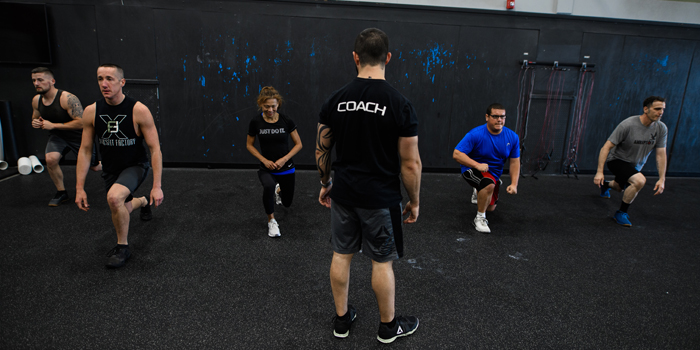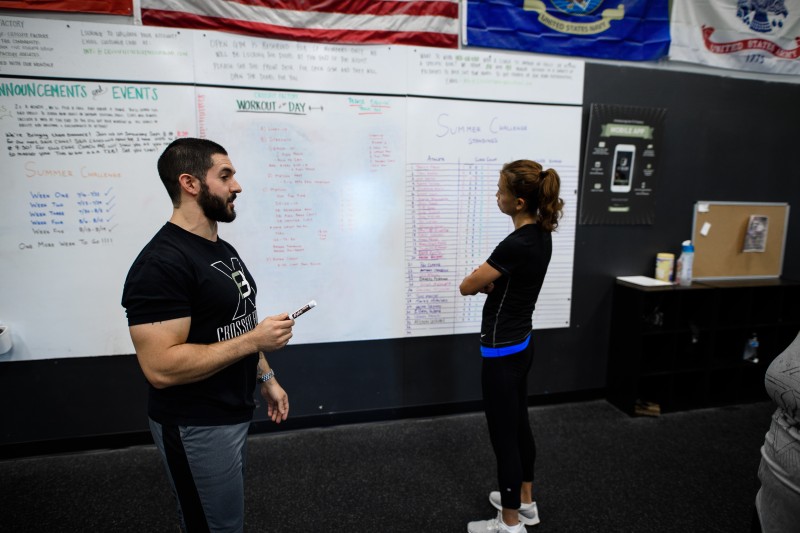
Over the last year, I've learned some very important business lessons—this will apply to this article, so bear with me. One of which is "staying in my lane." Let me explain. Our business started off by solving a problem for gym owners struggling to find the time to devote to writing great programming. I know many of you may think it's sacrilegious to let someone else program workouts for their clients, but in our case, writing workouts for group classes can be done very effectively. Remember, we aren't writing programming for one individual client, but rather a "greater good for the greatest number approach"—a topic for another day.
Needless to say, it was gratifying to help people that were trying to provide their clients with the same things we were. Fast forward three years and working with close to 200 gyms, I figured if we could solve one issue, why not solve another issue. Why not integrate the programming we were providing to whatever software system our clients were using so they could then deliver the programming to their clients. Systems such as SugarWOD, BTWB, WODify, are all systems that accomplish this task. The problem was that it requires a fair amount of time for the gym owner to take our programming and enter it into their software. And so it began—creating partnerships and integrations with software companies to save our clients even MORE time. It seemed like a great idea at the time.
Fast forward to present day: Getting involved with software integrations was quite frankly one of the biggest wastes of time and resources we've incurred to date. Aside from the time and monetary value, it made us look like complete buffoons far too many times. For example, we'd often get software questions we didn't know the answer to, which made us look like we hadn't done our homework. Learning all the ins and outs of these systems requires an advanced computer science degree, IMO. We would have to defer back to the software folks and then wait for their response (sometimes there was no response which just added insult to injury.) That's only one of the issues among many, but I'll spare you.
Long story short, we had ZERO business getting involved with software integrations. The objective was to provide top-notch programming as an exercise physiologist (NOT a computer programmer). We were already solving a MASSIVE problem, and that's where it should have ended for us. Again, what seemed like a great idea at the time put our business in a disadvantageous position. Interestingly enough, my gut instinct was NEVER in favor of these integrations, but I went against my gut to please my clients. In the end, I ended up resenting myself for not making the right move.
Right now, boxes face challenges that no playbook illustrates. Instead of talking about these challenges, I'm going to stay in my lane and talk about PROGRAMMING. We've talked about ways to improve group programming here, so please check out those articles if you have not already. You see, some of what will be said here will reiterate many of those thoughts. In short, you have the golden opportunity RIGHT NOW to reinvent what you do and how. Let me explain.
We've talked about things that serve little to no purpose for general fitness like the Olympic Lifts and higher-skill gymnastics. To counter that, we've talked about things that serve almost anyone that walks through your door like general strength and aerobic work. Yet many fall into the trap of taking too much feedback from their clients. They let their clients' needs dictate their program design. Truth be told, your clients do not know what they need. If they did, they wouldn't be coming to you. With that said, consider this moment right now as a blank slate, "tabula rasa." You CAN change the game and take back control. You can build value in measures that do not crush your clients' souls in every single workout, but still allow for consistent progression. And because it's a blank slate, so to speak, and stress levels are at all-time highs, you can explain why it's relevant to your clients to start training smarter.

Here's where to start:
Develop a Template
Have a plan in terms of how your work is structured within the week to ensure proper distribution of movement patterns and separation of high-intensity work. If you go with overhead and/or squatting daily, ask yourself how you feel training like that. Also, if you plan things correctly, it shouldn't matter what days people show up—they'll still receive work that will move them forward. Here's how we structure our training with some examples:
Monday
• Max Effort Lower Body Movement
• Sledpushes + Loaded Carries
• Recovery Measures
Tuesday
• Repetition Upper Body Work
• Mixed Modality EMOM
• Recovery Measures
Wednesday
• 30+ Minute Aerobic Piece
• Cardiac Output
Thursday
• Dynamic Effort Lower-Body
• Classic Couplet <10:00
• Accessory Work
Friday
• Max Effort Upper-Body
• Accessory Work
Saturday
• Partner or Team Conditioning. Energy System varies based on intensity load from each microcycle.
Sunday
- At home minimalist style total-body training
Use General Strength Work 4x A Week
Strength is the foundation of ALL fitness, not to mention it serves the NUMBER ONE GOAL of arguably every person that walks through your door: Improve how they look and feel. Moreover, this work will significantly decrease the risk of injury and help clean up some nagging aches and pains. It will also improve how people look naked.
Lower-intensity Work Drives High-Intensity Work
Our lives have never been more stressful than they are right now, and compounded stress on stress is a recipe for burnout. Therefore, the basis of our conditioning should be lower-intensity work. In layman's terms, we'll make sure our high-intensity workouts are separated by enough time in the week to prevent central fatigue. We'll also follow the same logic separating high-intensity strength work. The above template separates this work by 72 hours.
Get Rid of Kipping Pull-ups Permanently
I'm still waiting for the day when someone can intelligently explain why soccer moms need to be doing kipping pull-ups, but I won't hold my breath waiting. 100 C2B pull-ups may have their place for the box competitor, but it does NOT have a place for a soccer mom. Instead, give your clients more weekly horizontal pulling and direct arm work.
Perform the Olympic Lifts in a Specialty Class
Much like high-volume gymnastics, Olympic lifting will have little effect on your clients' overall goals and will drastically increase the risk of injury when consistently performed in conditioning work. If someone wants to focus on the Olympic lifts, then it should be done in a specialty class or in a one-on-one training session, not in a conditioning piece when their heart rate is at 180.
Loaded Carries and Sled Work = Best Strength & Conditioning Tools Known to Man
Some of you may still be holding your classes outdoors, which is even more reason to rely on sleds and loaded carries. Most boxes seldom program loaded carries or sled work. If there were a single modality that provides a huge bang for their buck, why would you not use it regularly? Additionally, this work carries low-skill requisite and no axial loading, making it a no-brainer. This fits perfectly into our low-skill work to drive the high-skill work model, as this work checks the boxes in multiple areas.
Less Emphasis on Past Metrics
Many of your clients will be trying to regain all of their gains they lost during quarantine, so there is no better time to throw out past metrics. I get it, for the type A person, constantly measuring themselves against others. Their past performances can be detrimental to their mental health, especially when people incur setbacks from stressors outside of the gym that can impair how they're performing on a given day. I'm all for keeping track of data, but mixing in scoreless workouts that focus on quality versus quantity can go a long way.
6 Foundational Movement Patterns
All too often, we see folks that have not mastered the squat and hip-hinge but yet they're performing variations at the top of movement hierarchy like the overhead squat. It's time to throw out the "9 Essential Movements" and make the "6 Foundational Movements" your priority—squat, hip-hinge, push, pull, lunge, and carry (local-motion). Many chronic aches and pains can be cleared up when these foundational movements take priority.
Now is the time to hit the restart button and level-up the service you provide to your clients. I can't stress enough how important it is to be mindful that your clients' bodies do not know the difference between stress outside of the gym vs. stress in the gym. Your job is to manage that stress and NOT put people at risk of overtraining or injury—all of which can be done with the above plan.
Images courtesy of RX Photography











1 Comment